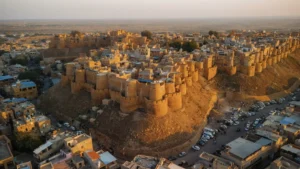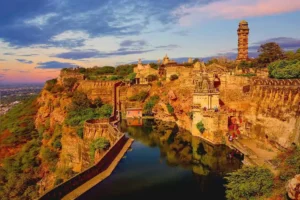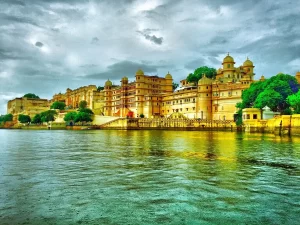The City Palace of Jaipur, located in the heart of Rajasthan’s capital, is a stunning fusion of Mughal and Rajput architectural styles. Known for its regal grandeur and historical significance, the palace remains a must-visit destination for history enthusiasts and travelers seeking a glimpse into India’s royal past.
History of City Palace Jaipur
City Palace was built between 1727 and 1732 by Maharaja Sawai Jai Singh II, the founder of Jaipur. The palace complex was constructed as a part of the newly established city of Jaipur, which was designed following principles of Vastu Shastra and Shilpa Shastra. Over the centuries, subsequent rulers expanded and modified the palace, adding elements of art and architecture that reflect their times. The palace served as the seat of the Maharaja of Jaipur and continues to house the descendants of the royal family in its Chandra Mahal section.
Key historical highlights include:
- The role of the palace as an administrative and cultural hub.
- The integration of Mughal influences, showcasing Jaipur’s alliance with the Mughal Empire.
- Restoration efforts that have preserved the palace’s historical integrity.
Inside City Palace, Jaipur
The City Palace complex is vast and includes several courtyards, gardens, and buildings. Each area has a unique charm, blending intricate architecture with cultural exhibits.
1. Mubarak Mahal
A beautiful reception hall built in the late 19th century by Maharaja Madho Singh II. It houses a museum showcasing royal textiles, costumes, and artifacts.
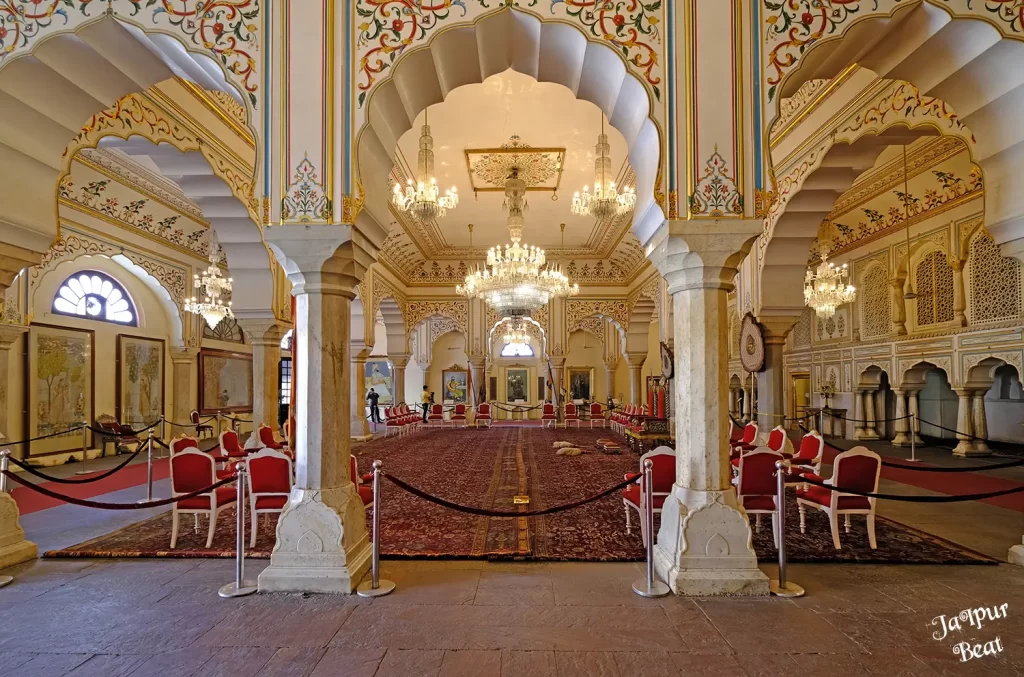
2. Chandra Mahal
This seven-story building remains the residence of the royal family. Each floor offers stunning views of the city and houses royal memorabilia, such as paintings, manuscripts, and floral decorations.
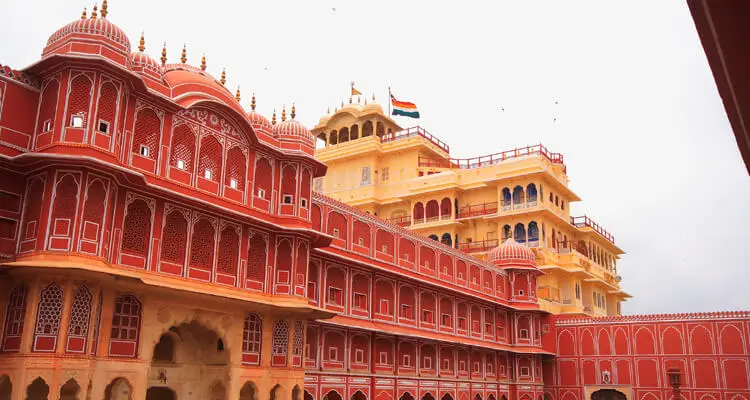
3. Diwan-i-Khas and Diwan-i-Aam
- Diwan-i-Khas: A private audience hall with two enormous silver urns, which are recognized as the world’s largest silver vessels.
- Diwan-i-Aam: A public audience hall known for its intricately painted ceilings and art collections.
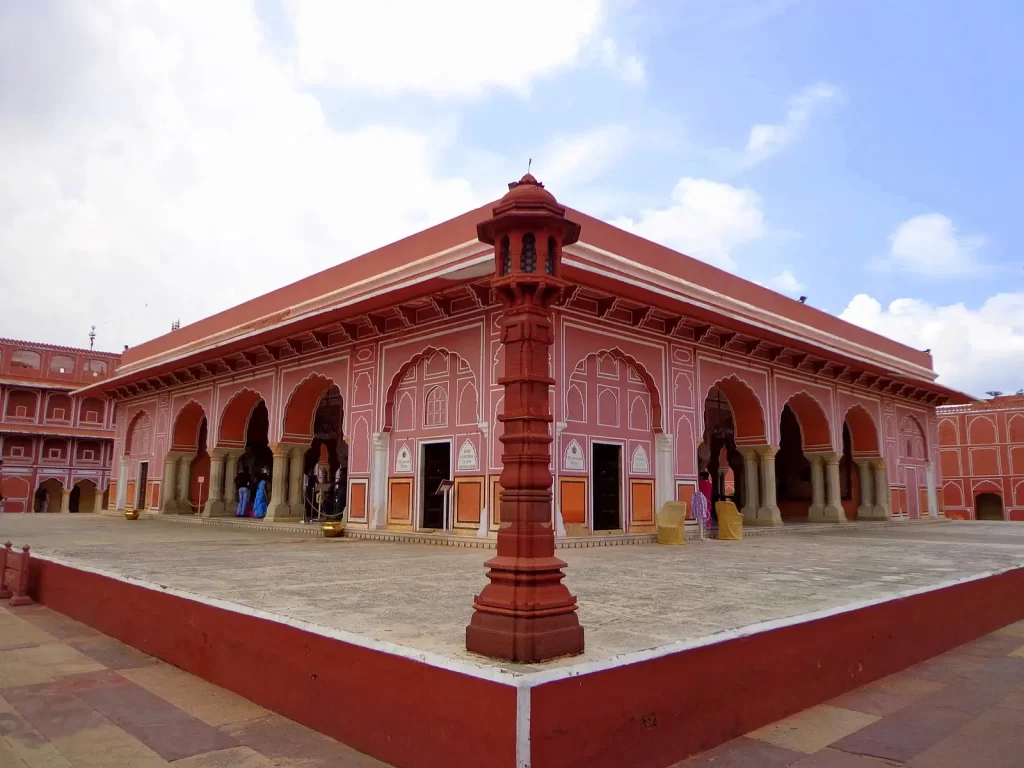
4. Pritam Niwas Chowk
This courtyard is famous for its four stunning gates, each symbolizing a different season: Peacock Gate (autumn), Lotus Gate (summer), Green Gate (spring), and Rose Gate (winter).
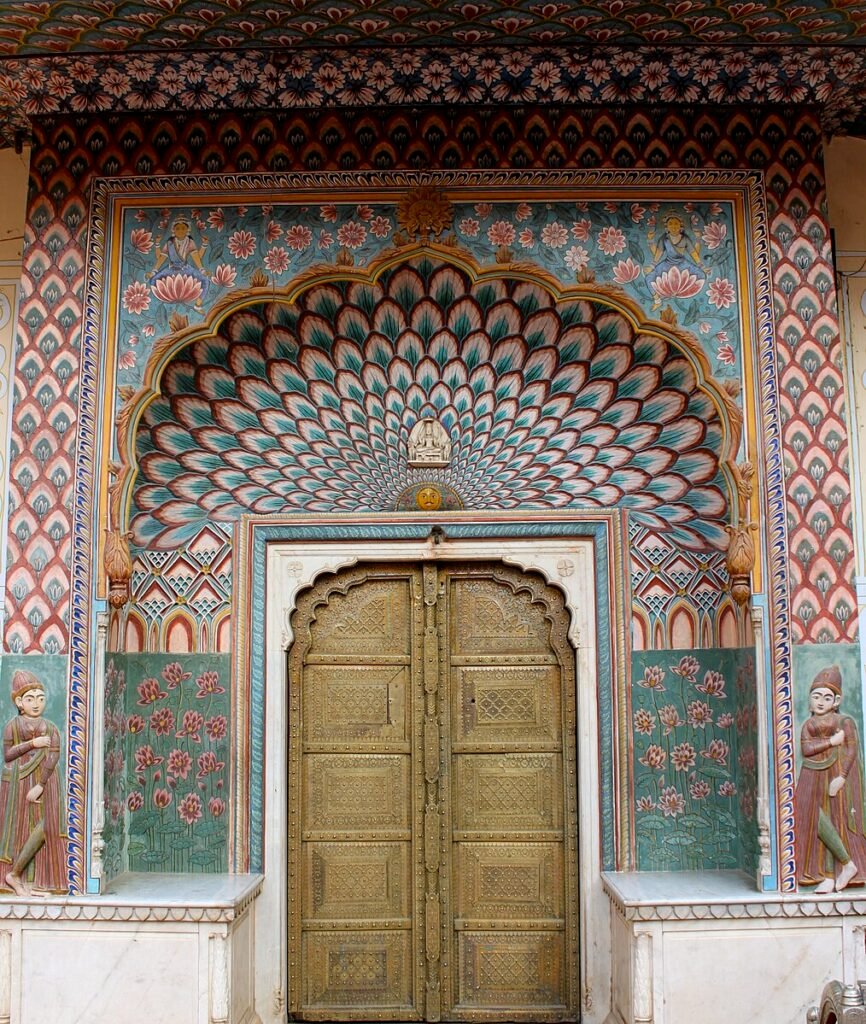
5. Maharani Palace
Formerly the royal queen’s residence, it now showcases an impressive collection of weapons and armory used by the Rajput rulers.
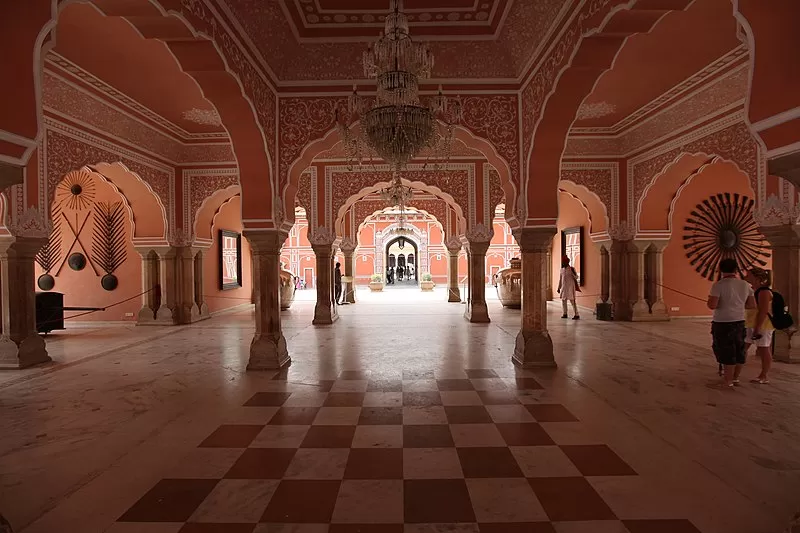
Fees of City Palace Jaipur
- General Entry Fee:
₹200 for Indian adults, ₹100 for Indian students, ₹700 for foreign adults. - Museum Entry (Including Chandra Mahal):
₹3000 for Indian adults and ₹3500 for foreign visitors.
Additional charges apply for photography and guided tours. Prices may vary, so it’s best to check the official website or ticket counter for updates.
Traveler Tips about City Palace Jaipur
- Timing: Visit early in the morning to avoid crowds and enjoy the best light for photography.
- Attire: Wear comfortable clothing and footwear, as the palace requires extensive walking.
- Tickets: Pre-book tickets online to save time and opt for a guided tour for an enriched experience.
- Respect the Heritage: Refrain from touching exhibits and maintain decorum inside the palace.
Interesting Facts about City Palace Jaipur
- The Peacock Gate in Pritam Niwas Chowk is a celebrated masterpiece of Rajput art.
- The two silver urns in Diwan-i-Khas hold a Guinness World Record for being the largest silver vessels.
- The palace follows a grid layout, a feature unique to Jaipur’s urban planning.
- The royal family still resides in the Chandra Mahal section of the palace.
Nearby Places to Visit in Jaipur
1. Hawa Mahal (Palace of Winds): A short walk from the City Palace, this iconic structure is known for its intricate latticework.
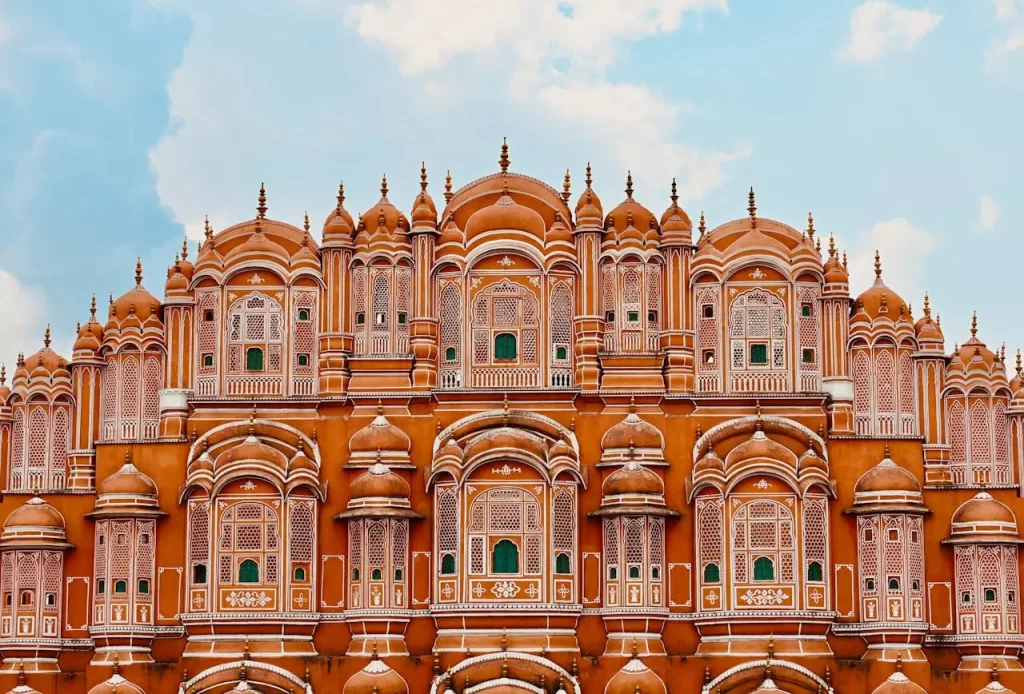
2. Jantar Mantar: An astronomical observatory built by Maharaja Jai Singh II, recognized as a UNESCO World Heritage Site.
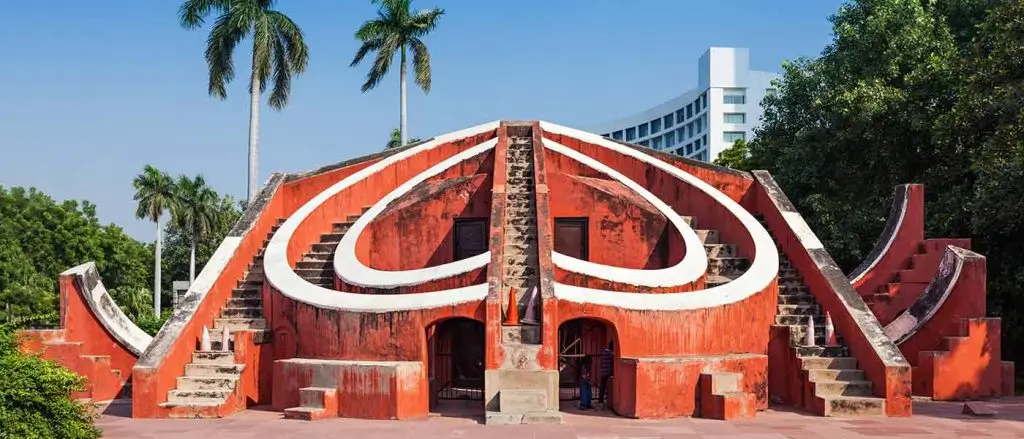
3. Albert Hall Museum: Located in Ram Niwas Garden, it houses an extensive collection of artifacts.
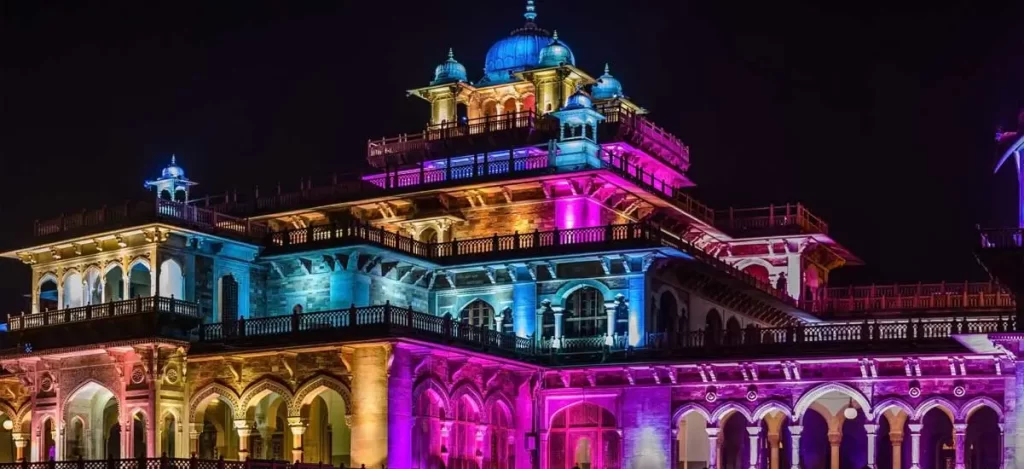
4. Amber Fort: A majestic fort located a short drive away, offering a glimpse of Rajasthan‘s royal history.
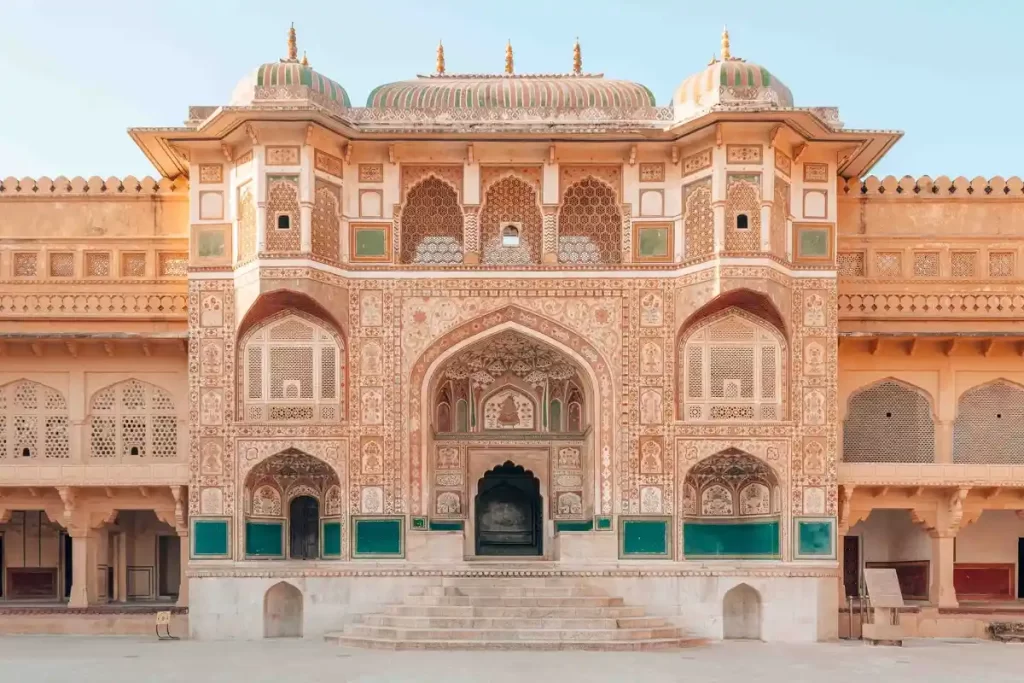
5. Jal Mahal: A beautiful palace situated in the middle of Man Sagar Lake.
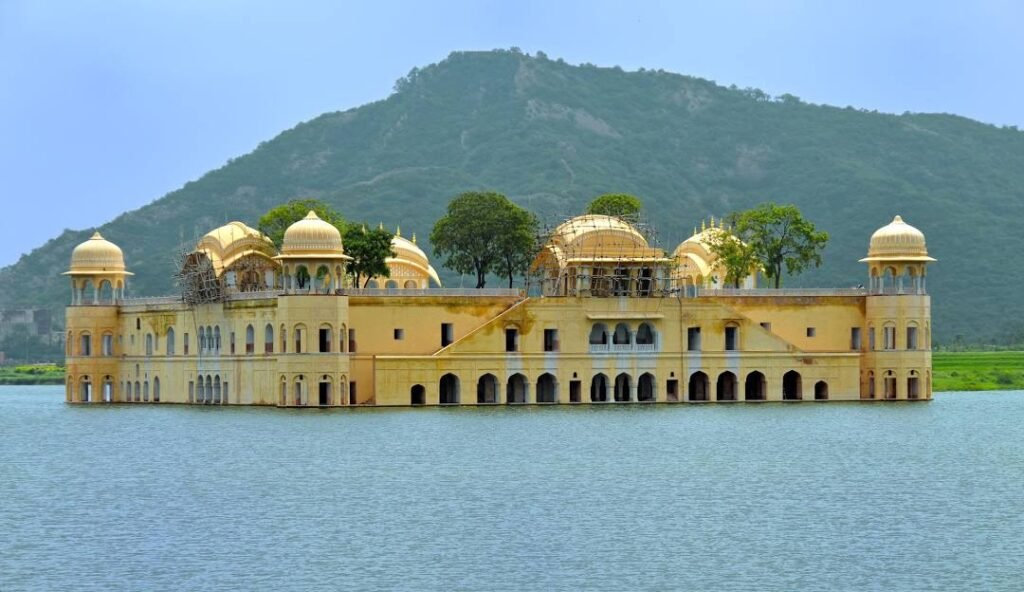
Accessibility of City Palace Jaipur
The palace is easily accessible by road and is located approximately 11 km from Jaipur International Airport and 4 km from the Jaipur Railway Station. Local buses, auto-rickshaws, and cabs are readily available.
Which City is Known as City Palace?
While several Indian cities have City Palaces, Jaipur’s City Palace stands out for its historical significance and architectural splendor. Other cities, such as Udaipur and Mysore, also boast City Palaces, but Jaipur’s palace is renowned for its blend of tradition and modernity.
City Palace Jaipur – FAQ
What is the exact location of City Palace Jaipur?
The City Palace is located in the heart of Jaipur, near Jantar Mantar and Hawa Mahal, within the Pink City area.
What is the best time to visit City Palace Jaipur?
The ideal time to visit is between October and March, when the weather is pleasant. Avoid visiting during summer as temperatures can exceed 40°C.
What are the operating hours of the Palace?
The City Palace is open daily from 9:30 AM to 5:00 PM. Evening tours (for certain sections) are available with separate tickets.
Conclusion
The City Palace of Jaipur is not just a historical monument but a living legacy of India’s royal heritage. Its rich history, intricate architecture, and cultural significance make it a must-visit destination for travelers exploring the Pink City.

